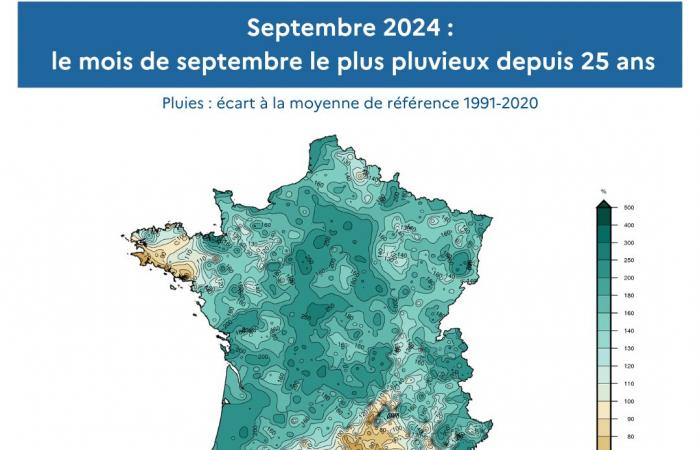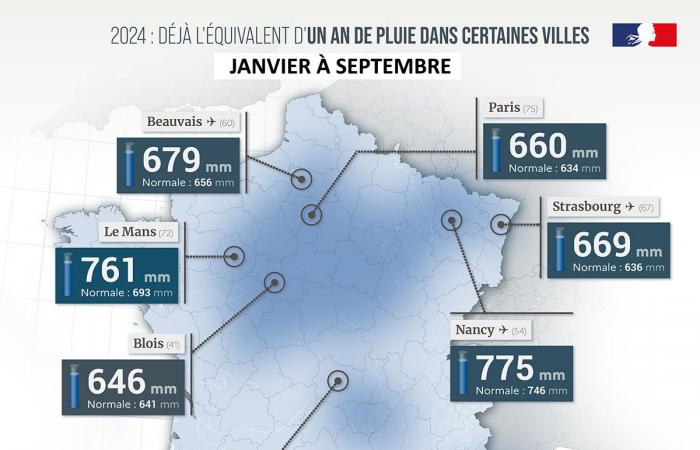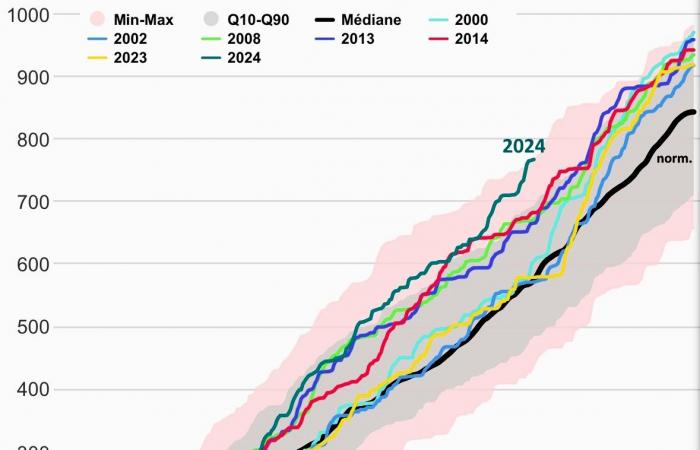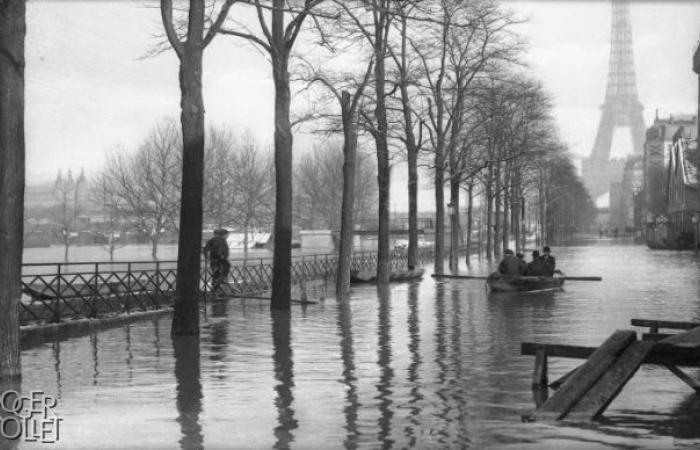Over the first three quarters of the year, 2024 tops the wettest years in France. Some regions have already exceeded the annual precipitation norm. Towards a record year?
A year of depression
Since the fall of 2023, anticyclonic periods have been very discreet in France. Thus, this year 2024 has so far been largely dominated by a low-pressure ocean flow, bringing frequent disturbances. The average pressure over the period from January 1 to September 24, 2024 is around 3 hPa below normal towards the Channel and the Benelux as well as the British Isles and the North Sea, a considerable deficit over a period of 9 months. The latter demonstrates the clear domination of the disturbed ocean flow over France.
Pressure anomaly in Europe over the period from January 1 to September 29, 2024 – NOAA
The month of September 2024 that we have just experienced is the perfect illustration of the instability and humidity of this year. With an average cumulative rainfall of 119 mm on a national scale, it has become the wettest month of September in France since the beginning of the century ! Many regions received more than 100 mm and collected up to 364 mm at Égletons in Corrèze and 351 mm at Ballon de Servance in Haute-Saône! We have to go back 25 years to find a wetter month of September (130 mm of average total in September 1999).

Departure from normal 1991-2020 rainfall in September 2024 – Weather France
2024 leading the way in the 21st century
As of September 30, the average cumulative rainfall in France since the start of the year amounts to 766 mm! The average at this time of year is 572 mm. This therefore equates to a considerable surplus of +34%! This figure makes 2024 the wettest year since the turn of the century, based on the first 9 months of the year. As of September 30, the old record for the period 2000-2023 was held by 2001 with an average accumulation of 744.3 mm, exceeded this year.

Average total rainfall in France from January to September, from 2000 to 2024 – Weather Cities
Another significant data: around 20% of French territory has already reached or exceeded its normal annual rainfall. This means that more rain fell in 9 months than is expected to fall in an entire year. This is for example the case of Paris which has already received 660 mm from January to September 2024 while the annual average is 634 mm. We can also note the 761 mm at Le Mans, which already clearly exceeds the annual average of 693 mm. Even the Côte d’Azur is not spared with 850 mm falling between January and September in Nice, compared to 791 mm during a normal year.
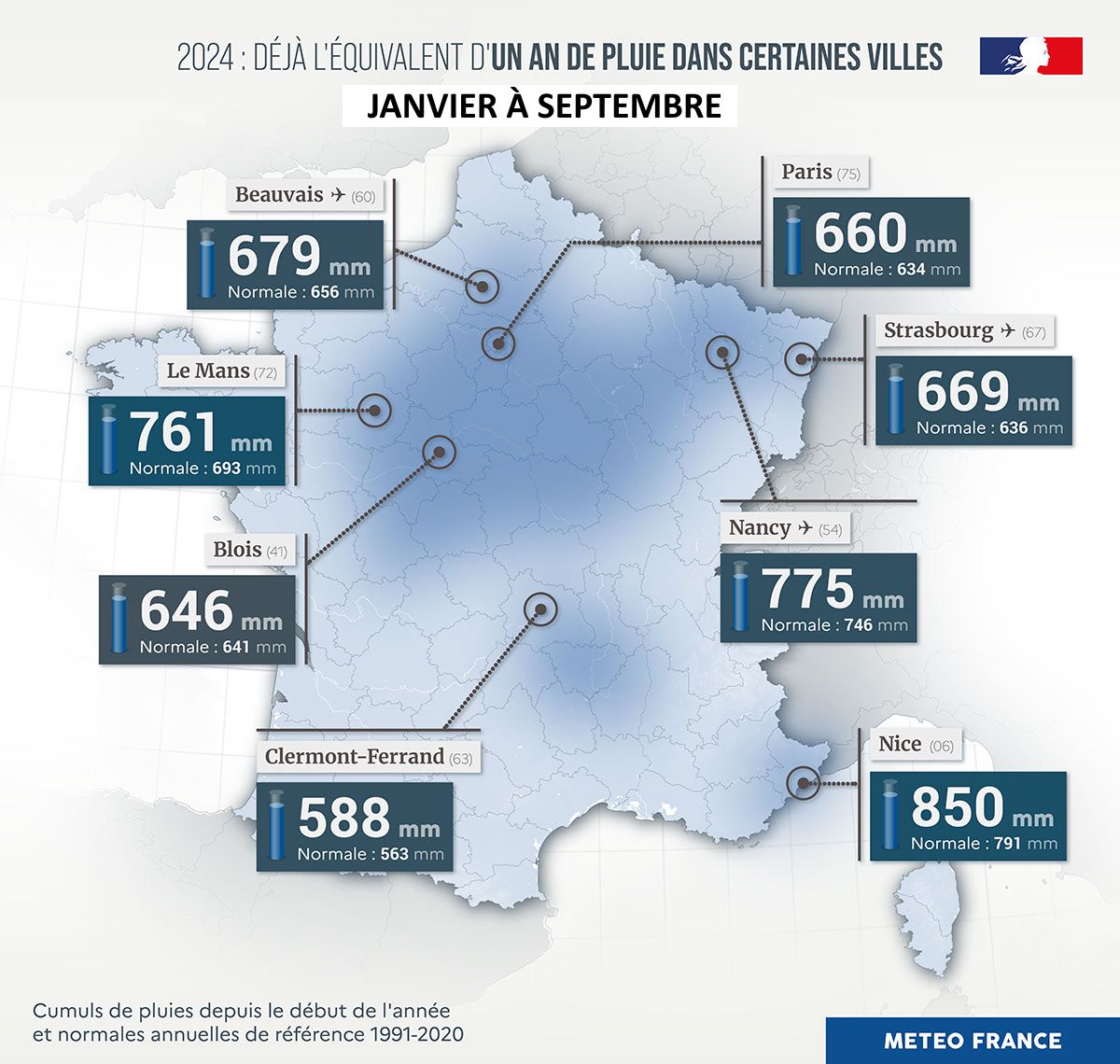
Cities having already exceeded their annual rainfall normal as of September 30, 2024 – Weather France
Will 2024 set a record?
With 766 mm as of September 30, France has just experienced its wettest first nine months since the start of the century. However, it is premature to describe 2024 as a record year. Indeed, among the wettest years of the 21st century, some experienced a very rainy last quarter. This was the case in 2000, the wettest year of the century so far. At the time, we counted just 603 mm on September 30 (163 mm less than in 2024) but ultimately 969 mm on December 31, after an average of 366 mm over the last three months of the year! To exceed 2000, there is still 203 mm of average national accumulation missing over October, November and December. 2024 has moved ahead but if high pressures regain the upper hand before the end of the year, it is not certain that 2000 will be dethroned.
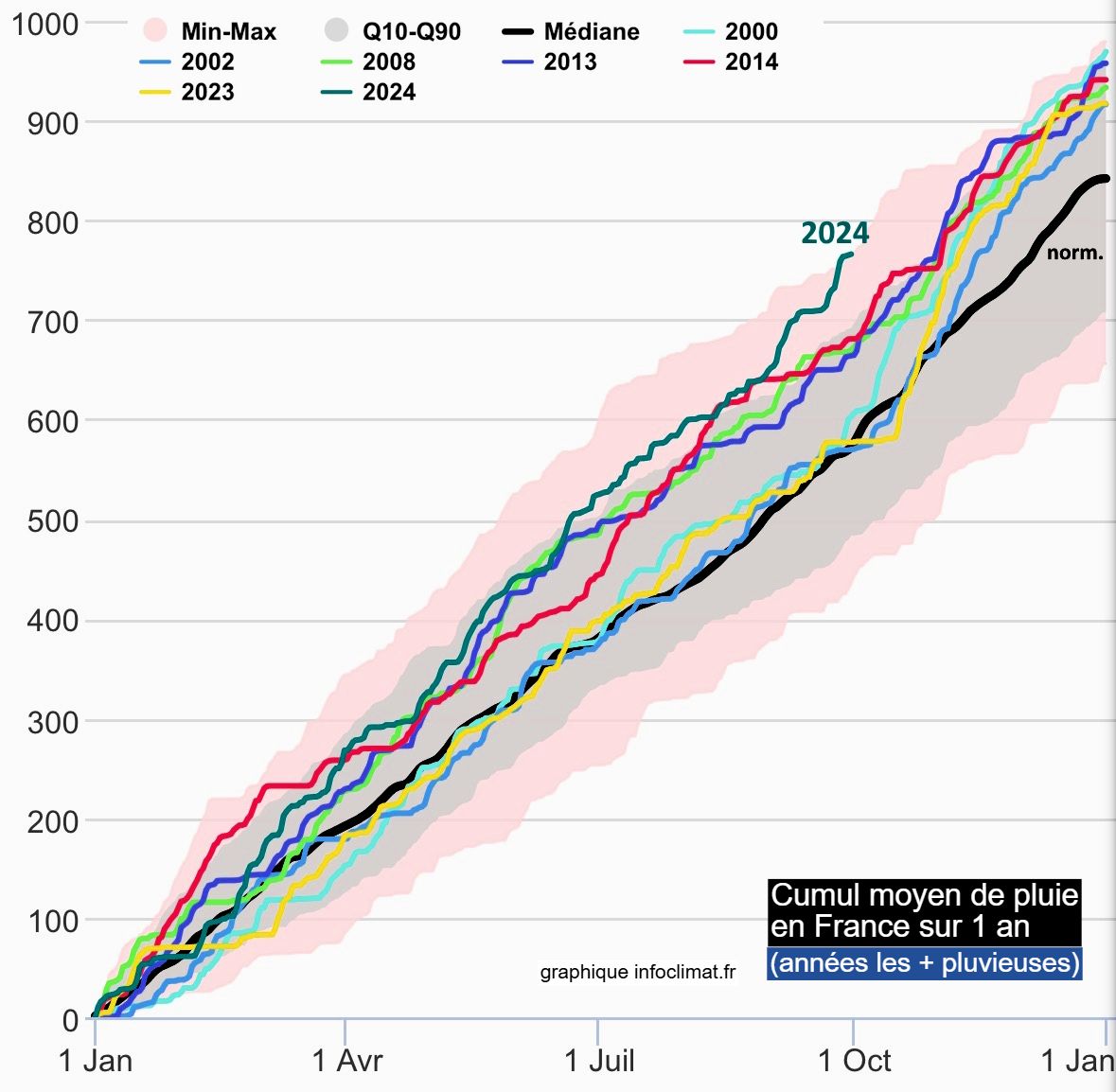
Average total rainfall in France over 1 year (rainiest years from 2000 to 2024) – infoclimat.fr
Moreover, the year 2000 is only the record of the 21st century. In the previous century, other years had seen greater rainfall. The year 1999 alone ended with an average accumulation of 979 mm, more than 2000. Even if the national rainfall indicator did not exist before 1985, some years have very probably experienced average accumulations greater than 1000 mm in the past. . We can, for example, cite 1910, a year which began with the flood of the century in Paris and which remained disrupted for a long time with frequent floods until the autumn. Among the most impressive measurements, we can cite the 4,014 mm of rain totaled at Mont Aigoual during the year 1913.

In the streets of Paris, the most practical means of transport becomes the boat – Roger Viollet
You can immerse yourself in the weather of yesteryear via our column >>>





